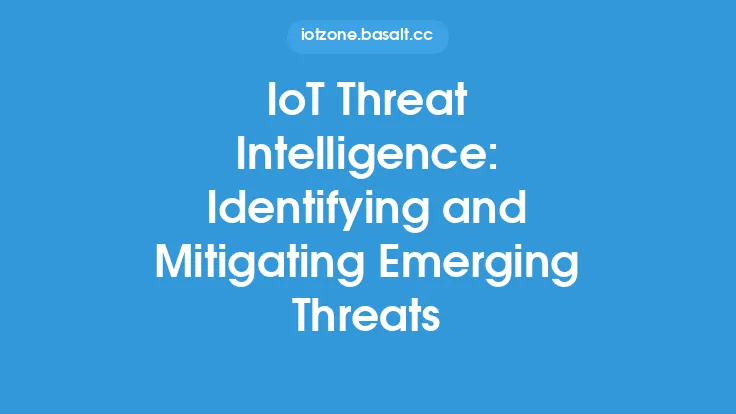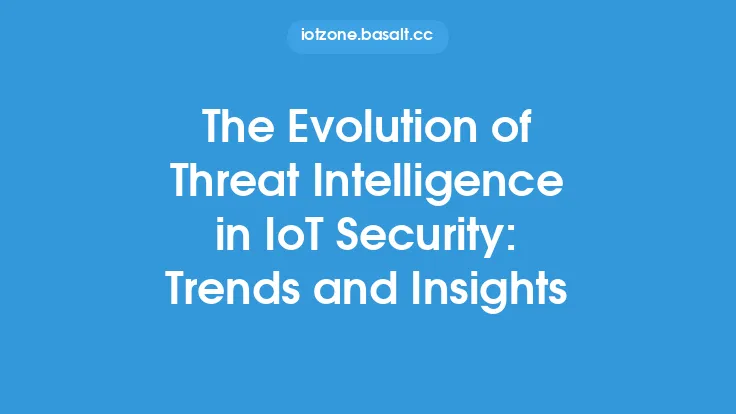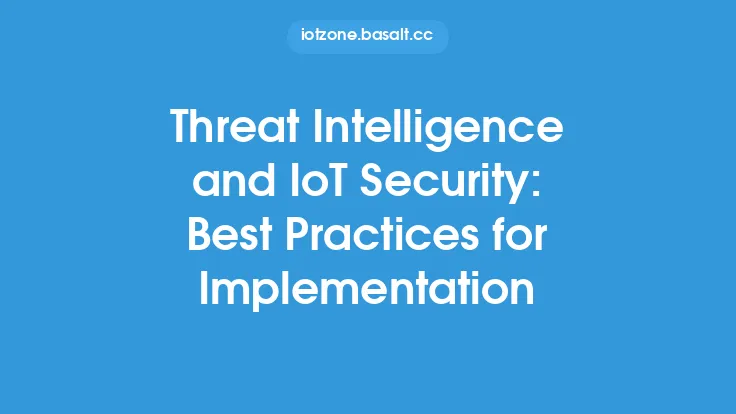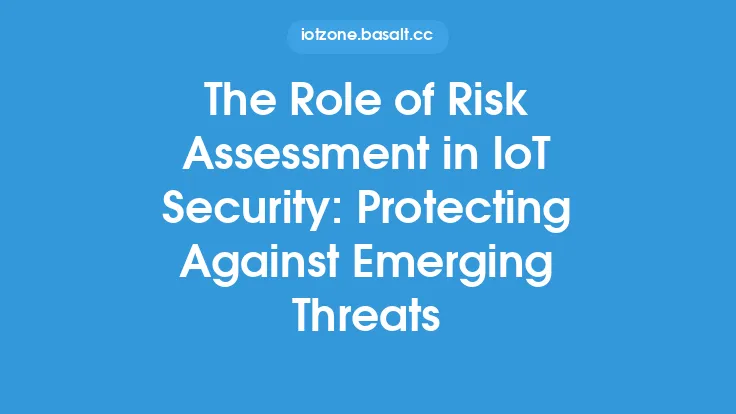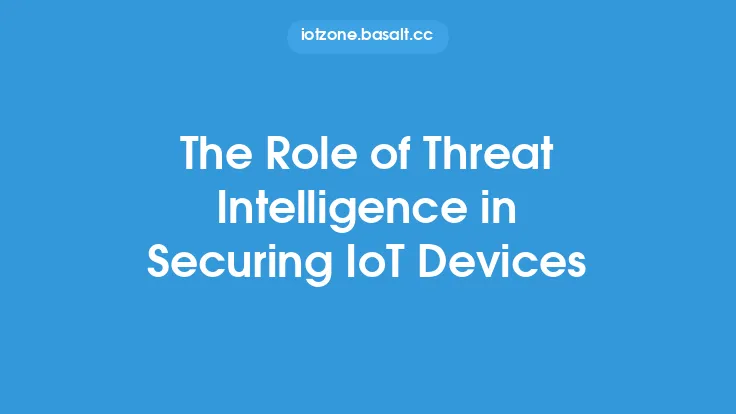The increasing number of connected devices in the Internet of Things (IoT) has created a vast attack surface, making it a prime target for malicious actors. As the IoT landscape continues to evolve, it's essential to stay ahead of emerging threats and vulnerabilities. IoT threat intelligence plays a critical role in helping organizations anticipate, detect, and respond to potential security threats. In this article, we'll delve into the world of IoT threat intelligence, exploring its importance, key concepts, and best practices for implementation.
Introduction to IoT Threat Intelligence
IoT threat intelligence refers to the process of collecting, analyzing, and disseminating information about potential or actual security threats to IoT devices, networks, and systems. This information can include data on known vulnerabilities, malware, phishing campaigns, and other types of cyber threats. The primary goal of IoT threat intelligence is to provide organizations with the insights they need to make informed decisions about their security posture and stay ahead of emerging threats.
Key Concepts in IoT Threat Intelligence
Several key concepts are essential to understanding IoT threat intelligence. These include:
- Threat indicators: These are pieces of information that suggest a potential security threat, such as IP addresses, domain names, or file hashes.
- Vulnerability management: This involves identifying, classifying, and prioritizing vulnerabilities in IoT devices and systems.
- Risk assessment: This process involves evaluating the likelihood and potential impact of a security threat.
- Incident response: This refers to the process of responding to and managing a security incident, such as a breach or malware outbreak.
Sources of IoT Threat Intelligence
IoT threat intelligence can be gathered from a variety of sources, including:
- Open-source intelligence: This includes publicly available information from sources like social media, online forums, and security blogs.
- Closed-source intelligence: This refers to proprietary information gathered from sources like threat intelligence feeds, security vendors, and research reports.
- Human intelligence: This involves gathering information from human sources, such as security experts, researchers, and industry partners.
- Machine intelligence: This refers to the use of machine learning and artificial intelligence to analyze and identify potential security threats.
Implementing IoT Threat Intelligence
Implementing IoT threat intelligence requires a structured approach. The following steps can help organizations get started:
- Define the scope: Identify the IoT devices, networks, and systems that need to be protected.
- Gather intelligence: Collect threat intelligence from various sources, including open-source, closed-source, human, and machine intelligence.
- Analyze and prioritize: Analyze the gathered intelligence and prioritize potential security threats based on their likelihood and potential impact.
- Develop a response plan: Create a plan for responding to and managing security incidents.
- Continuously monitor: Continuously monitor the IoT environment for potential security threats and update the threat intelligence accordingly.
Best Practices for IoT Threat Intelligence
Several best practices can help organizations make the most of their IoT threat intelligence efforts. These include:
- Integrate with existing security systems: Integrate IoT threat intelligence with existing security systems, such as security information and event management (SIEM) systems and incident response platforms.
- Use automation: Use automation to streamline the process of gathering, analyzing, and disseminating threat intelligence.
- Collaborate with industry partners: Collaborate with industry partners, such as security vendors and research organizations, to gather and share threat intelligence.
- Stay up-to-date: Stay up-to-date with the latest security threats and vulnerabilities by continuously monitoring the IoT environment and updating the threat intelligence accordingly.
Technical Considerations for IoT Threat Intelligence
Several technical considerations are essential to implementing effective IoT threat intelligence. These include:
- Device profiling: Creating detailed profiles of IoT devices, including their hardware, software, and network configurations.
- Network traffic analysis: Analyzing network traffic to identify potential security threats, such as malware or unauthorized access.
- Anomaly detection: Using machine learning and artificial intelligence to detect anomalies in IoT device behavior that may indicate a security threat.
- Encryption: Using encryption to protect IoT device communications and prevent eavesdropping or tampering.
Challenges and Limitations of IoT Threat Intelligence
While IoT threat intelligence is a powerful tool for staying ahead of emerging threats and vulnerabilities, it's not without its challenges and limitations. These include:
- Data overload: The sheer volume of threat intelligence data can be overwhelming, making it difficult to prioritize and analyze potential security threats.
- False positives: The risk of false positives, where a legitimate activity is misidentified as a security threat, can be high.
- Evasion techniques: Malicious actors may use evasion techniques, such as code obfuscation or anti-debugging techniques, to avoid detection.
- Limited visibility: The lack of visibility into IoT device behavior and network traffic can make it difficult to detect potential security threats.
Conclusion
IoT threat intelligence is a critical component of any IoT security strategy. By gathering, analyzing, and disseminating information about potential security threats, organizations can stay ahead of emerging threats and vulnerabilities. While there are challenges and limitations to implementing IoT threat intelligence, the benefits far outweigh the costs. By following best practices, such as integrating with existing security systems, using automation, and collaborating with industry partners, organizations can make the most of their IoT threat intelligence efforts and protect their IoT devices, networks, and systems from potential security threats.
